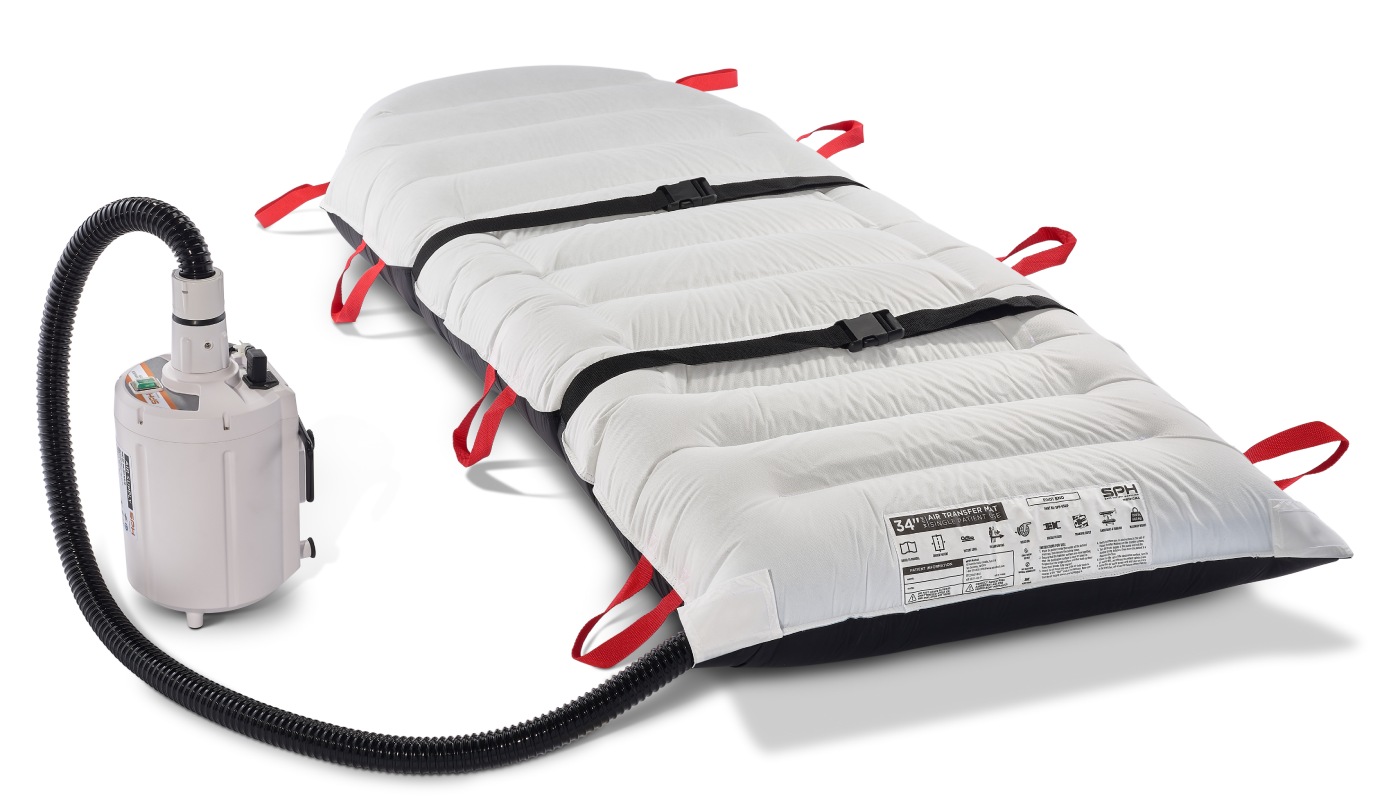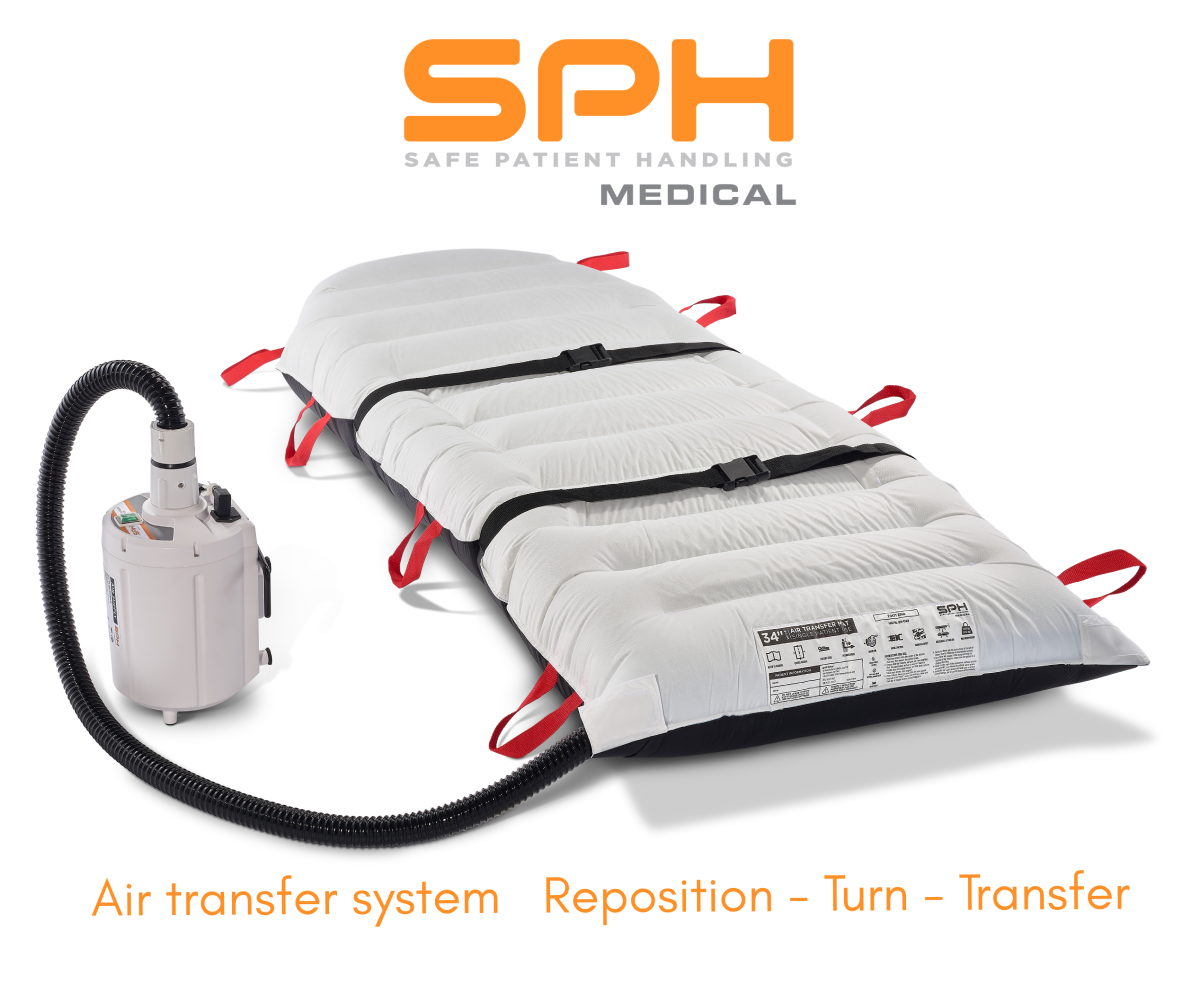The Evolution of Air Transfer Systems: How SPH Medical Stands Out
What if a single caregiver could safely transfer even a bariatric patient laterally from a bed to a stretcher with zero lifting, dramatically reducing their risk of injury? This is not a future concept; it is the proven reality of air powered lateral transfer systems. For decades, lateral patient transfers have stood out as one of the highest risk manual handling tasks performed by healthcare staff. This would lead to staggering rates of musculoskeletal injuries. Air transfer technology was invented to solve this exact problem, creating a cushion of air to float a patient effortlessly from one surface to another.
While the original patents on this transformative technology have expired, leading to a crowded market with major players like Hovertech (Hovermatt) and Arjo (which acquired AirPal), SPH Medical has emerged as one of the key players in this market. We provide a superior quality, Air Transfer and Positioning System that delivers unmatched safety and exceptional cost savings. This article will trace the evolution of air transfer technology, analyze the current competitive landscape, and demonstrate how SPH Medical provides the premier solution for modern Safe Patient Handling programs.
The Genesis and Impact of Air-Powered Transfer Technology
This innovation directly addresses the severe biomechanical strain highlighted by research from institutions like OHSU’s Biodynamics Lab. The lab has unequivocally demonstrated the dangers of manual patient handling. The initial patents in Air Transfer Mattress technology gave rise to industry pioneers like AirPal, recently acquired by Arjo which is owned by global medical technology company Gettinge. AirPal’s patents over the years helped develop the durable/reusable transfer pad market. Facilities that adopted this technology saw a dramatic reduction in staff injuries, particularly to the back and shoulders, related to lateral transfers and patient boosting. The technology proved its value, and the market was primed for expansion.
The Modern Competitive Landscape: A Market of Giants
With the expiration of the foundational patents, the market for air transfer systems expanded, solidifying the presence of major manufacturers. Hovertech, was already an established player. And they almost singlehandedly developed the single patient use transfer mat market. Hovertech with its Hovermatt product, became a dominant name, offering both reusable and single-patient use options. Arjo strengthened its already robust portfolio by acquiring and integrating the proven AirPal technology. The widespread adoption of these systems in hospitals worldwide is a testament to the technology’s effectiveness.
SPH Medical’s Superior Value Proposition

SPH Medical’s market focus is to deliver on cost savings for the single patient use model. SPU transfer mats have become the gold standard for infection control and injury prevention. This is a top priority for all healthcare facilities and especially for injury prevention and risk management staff. Each SPH Medical air transfer mat is engineered for durability and reliability. Quality manufacturing ensures it is robust enough for the most demanding situations, including bariatric patients up to 1000lbs.
When directly comparing the value proposition, the advantages of choosing SPH Medical become clear. We provide a SPH program compliant solution that is consistently more cost-effective than systems from competitors. This allows facilities to overcome budgetary constraints and expand their Safe Patient Handling programs, protecting more staff across more departments. By choosing SPH Medical, facilities make a strategic investment in the long-term safety and well-being of their staff and patients.
Is your facility ready to enhance its Safe Patient Handling program with the best technology at the best value? Contact SPH Medical today to request a sample and see how our Air Transfer and Positioning System can reduce injuries and improve your bottom line.



